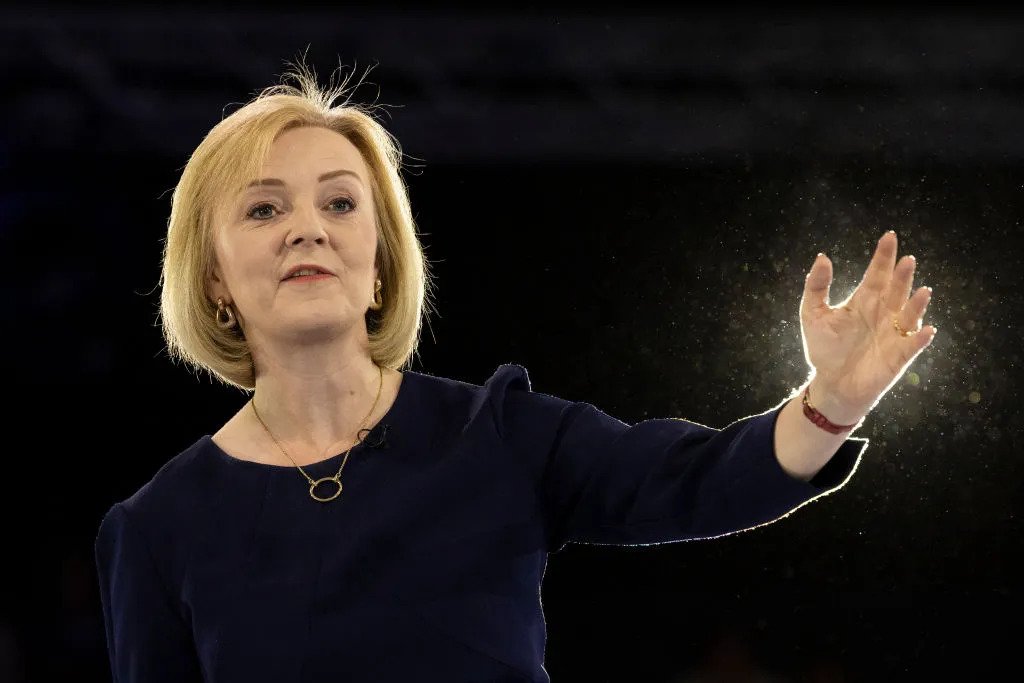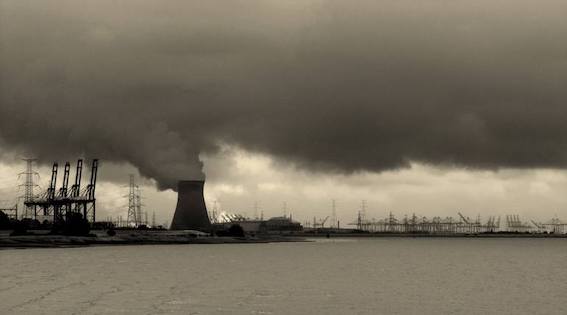On 6 September Liz Truss was appointed Prime Minister of the United Kingdom, after a Conservative leadership contest notable for its near-total lack of reference to the social calamity known as the cost-of-living crisis. While the ruling party spent the summer decrying ‘woke culture’ and praising the trickle-down theory, Keir Starmer’s Labour found a new spring in its step, calling for a windfall tax on energy firms and opening up a poll lead that could point towards the steps of Downing Street. Meanwhile, a wave of strikes and protests – centred on consumer prices and real wages – has given a shot in the arm to a radical left still emerging from the post-Corbyn doldrums. Don’t Pay UK, canvassing support for the mass non-payment of energy bills in the wake of a 56% April increase and an 80% hike scheduled for October, has amassed a pledge list of almost 200,000 refuseniks.
During this period, the cap on maximum domestic energy changes by Ofgem – toothless regulator of the privatized energy system – became the object of increasing discontent. This was not the intention of Theresa May’s government when it introduced the energy cap in 2018, in an attempt to allay pressure from Jeremy Corbyn’s Labour (the proposal for a cap itself dating as far back as Ed Miliband’s leadership). Yet as wholesale natural gas prices spiked across Eurasia over 2021, then skyrocketed following Russia’s invasion of Ukraine, Ofgem continued to raise its price ceiling to unprecedented heights, bound by legislation to guarantee a 1.9% profit to retailers. This brought with it the prospect of nationwide strikes plus mass civil disobedience. So, on the second day of Truss’s tenure, the government pledged a not-quite freeze on bills (the typical bill will go up £600 rather than £1,600) for the politically significant period of two years, up until the last possible date of the next general election. This was the largest single economic intervention in Britain’s peacetime history, dwarfing the eventual cost of the Covid furlough scheme.
There is an obvious precedent for Truss’s handout. When Thatcher became PM in May 1979 she immediately accepted the recommendation of the Clegg Commission, established by Callaghan after the Winter of Discontent, for an average public-sector pay rise of 25% – approximately double the rate of inflation. This elicited a backlash from the new breed of hardline monetarists, but Thatcher recognized that securing industrial peace was more important than appeasing them. As The Economist reported at the time, she entered office with a clear intention to buy off stronger sections of organized labour while confronting and defeating weaker ones. The 1977 Ridley Plan described this as the ‘salami’ approach – ‘one thin slice at a time but by the end the lot is gone.’ In the short term, wrote Ridley, the government would have no choice but to ‘pay up’ to those unions ‘that have the nation by the jugular vein.’
It seems that today’s Tories – even (or perhaps especially) their most committed ideologues – are once again prepared to ‘pay up’ if it allows them to win a class fight. And let’s not delude ourselves: Chancellor Kwasi Kwarteng’s mini-Budget, announced this morning, shows that a class fight is underway. His so-called ‘fiscal event’ was the most dramatically regressive announcement by any government for some time – giving a £4,500 tax cut to the richest 500,000 people in the country while further tightening Britain’s miserly benefits system. This smash-and-grab raid on behalf of the very wealthiest must be set in the context of recent global upsets: the shifting international balance of power, trade wars, Covid-19, the Russian invasion of Ukraine and worsening ecological crises. With growth rendered uncertain by such turbulence, but profits still demanded, working-class and middle-class living standards are on the line. We are entering an era of zero-sum capitalism, even more cut-throat than that of the early eighties.
In this conjuncture, the old rules of Ukanian state management – according to which the Treasury’s books should be balanced and the free market should come first – appear to have been rewritten. The Tories of the Cameron-Osborne era are gone; in their place, we have austerity-sceptic Johnson followed by deficit-sceptic Truss. The former Chancellor Rishi Sunak has seen his drab bean-counting rejected by the Tory membership, while Truss is set to embark on a £150bn-plus borrowing bonanza. Reversing the NICs rise, cutting green levies on domestic energy bills and reversing Sunak’s planned Corporation Tax hike were the priorities she enumerated during the leadership campaign, the total cost of which could easily reach £30bn. These aren’t the Tories of old: neither Thatcher’s homilies on household budgets nor their repetition by Cameron and Osborne get a look in.
With that in mind, it is worth considering the Spectator’s fascinating survey of ‘Trussonomics’, based on interviews with her three leading economist supporters, for hints as to where the Tory right are headed. In it, Truss’s backers – who prefer to be known as ‘Trusketeers’, alas – outline a programme that deviates significantly from the traditional Conservative prospectus. Julian Jessop, former chief economist at the Institute of Economic Affairs, now asserts that the austerity of the 2010s was a mistake: ‘When the facts change, I change my mind…Ten years ago, I would have been much more conventional in my thinking that you need to get the budget deficit down as quickly as possible. But it’s clear that isn’t working.’ Patrick Minford, an early supporter of Thatcher, is currently reprising that role but flipped 180 degrees as he lays into the Treasury’s obsession with book-balancing: ‘We have policies in place which are raising taxation, that damaged growth in order to satisfy short-run borrowing constraints put forward by the Treasury.’
As for the monetarism Minford once expounded, with its insistence on a strict separation between the monetary authorities and the government as well as mechanical targets for monetary growth, Gerard Lyons, tipped as a member of Truss’s as-yet-unveiled Council of Economic Advisors, says he wants to ‘re-examine’ the Bank of England’s remit ‘to make sure it is fit for purpose’. Elsewhere, Kwarteng pays lip-service to the idea of central bank independence whilst simultaneously pledging that ‘fiscal and monetary policy must be coordinated’ – the passive voice happily disguising who, exactly, should be making the coordination happen. Put all this together, and the family resemblance is not so much to Thatcherism, with its rhetorical commitments to ‘sound money’ and balanced books, but to Reagonomics, with the US deficit under President Reagan ballooning to unprecedented levels thanks to tax cuts for the rich and vast increases in military spending. (Truss has promised to increase UK military spending to 3% of GDP by 2030, at an estimated cost of £157bn.)
Of course, these solutions are presented as short-term ones: a necessary yet temporary detour from the true path of deregulation and ‘sound money’. Minford has suggested that a 7% interest rate might ultimately be more appropriate for the British economy, while Jessop has suggested relaxing restrictions on financial services, ‘gene editing’ and data protection. But all this is for somewhere down the line. For now, the Trusketeers anticipate significant state intervention and large deficits, in part to provide a political cover for their long-term plans.
Will any of this work? Most economists would say no. The FT’s Martin Wolf claims it is a ‘fantasy’ to believe corporate tax cuts and deregulation will deliver improved growth, while Jonathan Portes asserts that deficit spending will stoke inflation. But here we might pause. With inflation largely driven by external factors – Putin’s invasion, environmental collapse, supply issues linked to the pandemic – conventional economic models of why prices rise, focusing on excessive demand, are falling short. Those still using them to talk up the inflationary risks of increased government deficits are likely to be proved quite wrong. It is therefore worth attempting a level-headed assessment of Truss’s economic prospectus – identifying its strengths and weaknesses, in the terms it has set itself – beyond the standard neoclassical framework.
The most pressing challenge for the British economy is currently the soaring price of essentials goods, causing households to spend less on desirable things like pubs, restaurants and local shops and more on undesirable things like fossil fuel companies – which means that government support, of the kind promised by Truss, will be necessary to sustain demand. Contra her detractors, this is unlikely to have much meaningful inflationary effect. If the government borrows money to cut domestic energy bills, the Institute of Public Policy Research estimates that 3.9% would be taken off the ONS’s calculation for the headline rate of inflation – a win-win, making life easier for households and reducing pressure on the Bank of England to further increase interest rates.
Other things being equal – the economist’s get-out clause – Truss’s plan to massively increase government borrowing will also have some impact on growth, if only because it’s hard to borrow and spend over £150bn without making something happen. Whether this is useful in the long-term is a different question: handing £30bn more to corporations, already squatting on a £950bn hoard in their bank accounts and showing no great inclination to invest, is hardly an effective use of the tax system. Then again, if corporations don’t actually spend their unexpected windfall in Britain, it is less likely to feed into inflationary pressures here.
So, when it comes to propping up demand, limiting inflation and stimulating immediate growth, Trussonomics won’t be as abortive as orthodox economists predict. And she needs only two years, at most, to prove something like competence before facing a general election. Yet there may be other fronts on which her domestic plan could falter. For one thing, the international situation today is more uncertain than in the 1970s, and Britain’s global position is far weaker. The UK retains immense privileges as a developed economy with deep, liquid capital markets and venerable institutions. But it is also undergoing a radical shift, via Brexit, in its relations with the rest of the world at a time of acute social stress. This will inevitably unsettle the Conservative’s traditional support base in big capital and finance, while the decrease in the value of the pound, presently hitting an almost forty-year nadir against the dollar, indicates the possibility of funding problems ahead.
This is compounded by Britain’s reliance on imported energy and food supplies. In the last true currency crisis face by a Conservative government – Black Wednesday in 1992 – Britain ran a small deficit on its energy consumption, soon to disappear as gas production peaked in 2000, and was 70% self-sufficient in food. Today, it imports roughly half its natural gas, and 45% of its food. The Black Wednesday crisis erupted because the government was unable to defend the value of the pound against the deutschmark inside the Exchange Rate Mechanism, a precursor to the euro. Today, Britain is out of the EU and the pound floats freely, but the currency crisis could be even more fundamental, if we are forced to pay higher sums for basic goods in a declining currency. Even if Truss – borrowing from the playbook of Anthony Barber, Chancellor under Heath in 1970 – manages to engineer a short-lived growth spurt at the beginning of her tenure, this will prove difficult to sustain. Indeed, it may have already evaporated by the time she is forced to face Starmer at the polls.
Truss also harbours unrealistic hopes of unlocking growth through a post-EU shake-up of employment laws, threatening the removal of rights on working time and, in a familiar trope, invoking the spectre of trade union militancy. But while the recent uptick in union membership and activity is to be welcomed, strikes in Britain remain rare, with the number of annual walkouts still close to the all-time lows of the last decade. Further restrictions on union organizing will not miraculously translate into improved productivity. Nor are there many remaining costs in Britain’s perilously neoliberal labour markets that could be removed without pushing further and deeper into living standards. If Truss wants to press ahead with such reforms, she will likely have to sweeten the pill or buy off discontent with further temporary handouts – which may draw opposition from the backbenches.
But where Trussonomics is perhaps most likely to fall apart due to domestic factors is in failing to overcome the resistance of the Treasury. Rumours that the new energy plan would involve forcing ten-year loans onto households indicate the lingering presence of Treasury Brain (harking back to the equally daft forced loan scheme which Sunak cooked up for domestic energy bills last spring). That this misstep was avoided suggests someone, somewhere in government is prepared to put political strategy over Sunak-style bean-counting. Yet the fact that this supposed ‘price freeze’ doesn’t entirely freeze prices, seemingly in deference to vestigial accountancy concerns, also evinces the zombie-like persistence of the latter.
As a result, the policy’s political efficacy has been blunted, opening up a gap which Labour could easily exploit. And this is to say nothing of the evident hypocrisy of making £40bn of liquidity support available to energy companies whilst promising only six months of support to every other business, large or small. Kwarteng’s peremptory sacking of Tom Scholar, Permanent Secretary at the Treasury, having been Second Permanent Treasury as austerity was implemented in the early 2010s, was greeted with howls of outrage from the liberal end of the media. But it reveals the new administration’s determination to press ahead with its programme against concerted opposition. The new Chancellor knows that realizing major deficits and mighty tax cuts means overriding Treasury recalcitrance.
It was always a mistake to think of austerity as a programme that swivel-eyed true-believers were determined to force upon the rest of us. This may have applied to a small number of Thatcherite diehards baying for shrunken states and flat taxes. But, by and large, austerity was promoted, designed and delivered by a cadre of ideologically adaptable Sensible People like Scholar, poring over spreadsheets at the Treasury and the Institute for Fiscal Studies. They were the ones who inflicted a miserable lost decade on the country. Now, the current crop of Tories may have few compunctions about cutting spending when the time comes; but they know better than to insist on it as a strategic priority. The class battles ahead demand a more considered approach. And should Truss’s plan fall short, as prices spiral upwards, growth disintegrates and the capital markets turn sour, there are many forces waiting to move: from the Don’t Payers to the striking workers, to those in her own party sharpening their knives for the next leadership contest.
Read on: Tom Hazeldine, ‘Transformatrix’, NLR 131.









